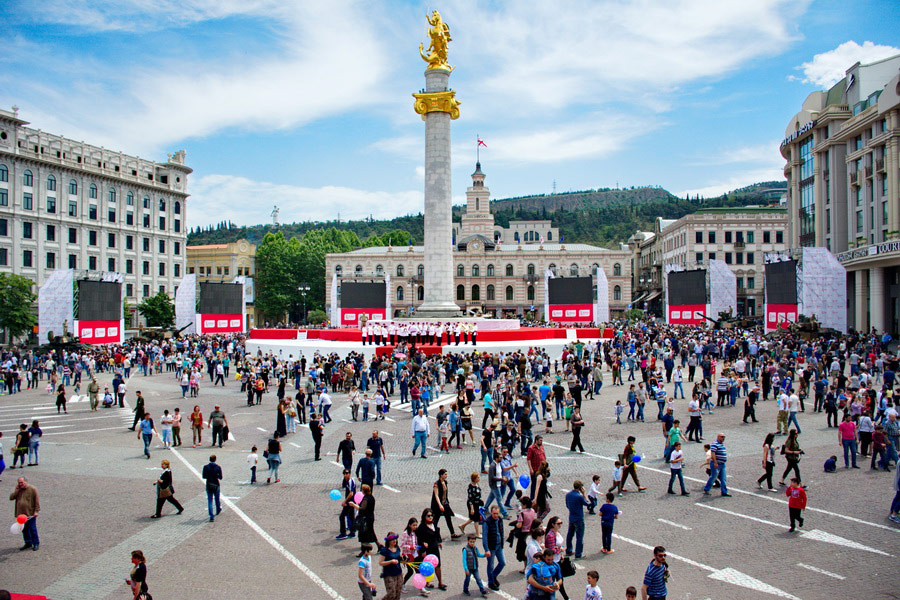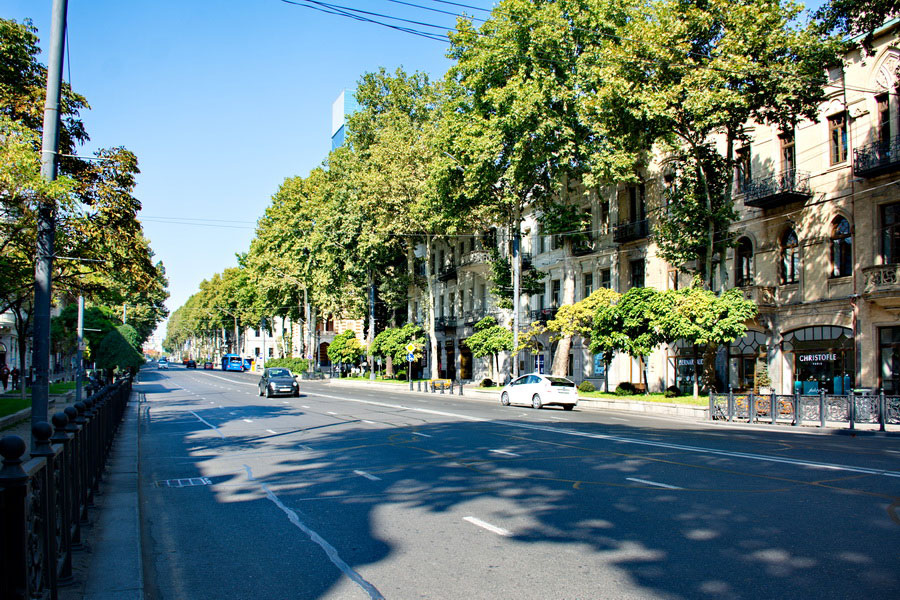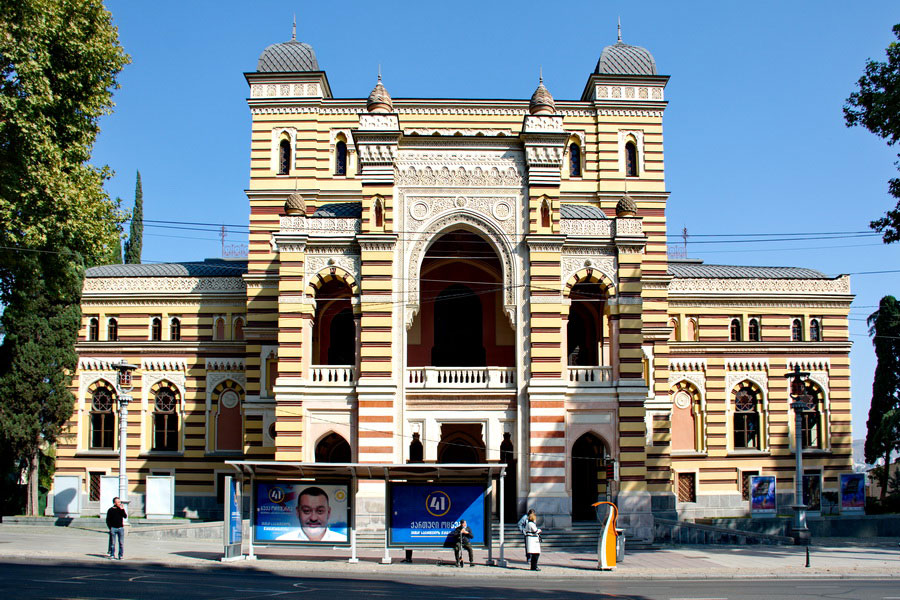
Rustaveli Avenue in Tbilisi is more than just the main thoroughfare in Georgia’s capital – it is symbolic of the city and is one of its most popular destinations. The name itself reflects Georgia’s heritage, for it was coined in honor of Shota Rustaveli, Georgia’s renowned 12th-century poet best known for his epic work "The Knight in the Panther's Skin".
History
Prior to the 19th century, the area to the left of Rustaveli Avenue was called Garetubani (Outer District) due to its location directly behind Tbilisi’s defensive wall. The neighborhood around Rustaveli Avenue, which was then called Kartli Road, was known to be devoid of buildings save one Armenian and two Georgian churches.
At the beginning of the 19th century, when Georgia became part of Tsarist Russia, the Russian government took interest in the area and began to develop it. After constructing the palace of the Russian commander-in-chief in Georgia, many other European-style buildings were built along Kartli Road. In 1841, the street name was changed to Golovin Avenue after locally stationed Russian commander Yevgeny Golovin. The name was changed to Rustaveli Avenue when Georgia declared its independence from Tsarist Russia in 1918.
By the turn of the 20th century, Rustaveli Avenue had become one of the most prominent places in the city. Admired for its modern architecture, theaters, opera houses, corporate offices and trade centers, the boulevard became equated with wealth and prestige. As its envious reputation attracted further investors, a flurry of construction of posh shops, luxury hotels and offices of successful firms ensued.

In the past two hundred years, Rustaveli Avenue has been at the epicentre of nearly every monumental event in the history of Tbilisi. From the Tbilisi Tragedy and somber protests which changed the course of Georgia’s history to lighthearted parades and concerts, Rustaveli Avenue is treasured for the role that it continues to play in the expression of Georgian identity.
Rustaveli Avenue Today
Rustaveli Avenue winds for more than 1.5 kilometres from Freedom Square until Rustaveli station of the Tbilisi Metro, where a statue of Shota Rustaveli keeps watch over passersby. Many state, cultural and private institutions are located along the boulevard, with each one telling a story from the life of Tbilisi. Visitors will not want to miss the legendary Parliament of Georgia, Georgian National Museum, Tbilisi Opera, Rustaveli Theatre and The Academy of Sciences, the latter of which attracts not only with stately architecture but with the traditional souvenirs which are sold on its steps.
Rustaveli Avenue offers a mixture of historic and modern landmarks, art galleries, exhibitions halls, theaters, shopping malls, cafes, restaurants and souvenir shops. Its beautifully decorated underground passages, street musicians, exhibitions and street art delight both first-time visitors and long-time residents. Either side of the avenue is decorated with small bronze statues created by modern Georgian artist Levan Bujiashvili, who expressed his love for the city through entertaining creations such as a saxophone player, Georgian toastmaster (Tamada) and characters from the works of famous Georgian painter Niko Pirosmani.
As the center of Tbilisi’s New Year celebrations, Rustaveli Avenue impresses winter visitors with luminous decorations, a myriad of Christmas/New Year concerts and a grand party and countdown on December 31st.

Tourists wishing for a quick overview of Tbilisi culture and history should consider spending one day exploring Rustaveli Avenue. As you take a morning walk along the promenade, stop in one of the cozy coffeeshops to grab a snack and watch the world go by. Pick up a few souvenirs at an underground gift shop before visiting an art gallery or museum to uncover some secrets of historic Tbilisi. Enjoy a traditional lunch in one of many local restaurants and listen to sacred songs pouring out of Kashveti Church before ending your day in one of the downtown theatres, opera houses or jazz clubs.
Rustaveli Avenue in Tbilisi bridges the gap between historic and modern Georgia, serving as a proud symbol of the changes that the city has undergone to become a modern capital in the 21st century.

